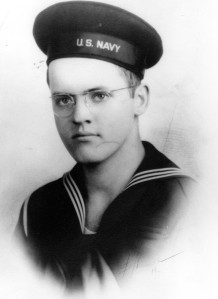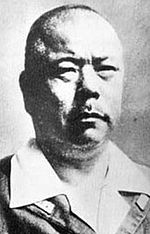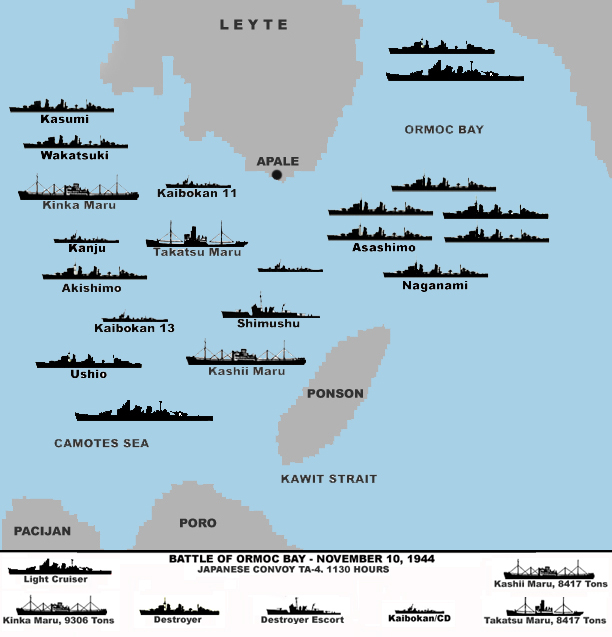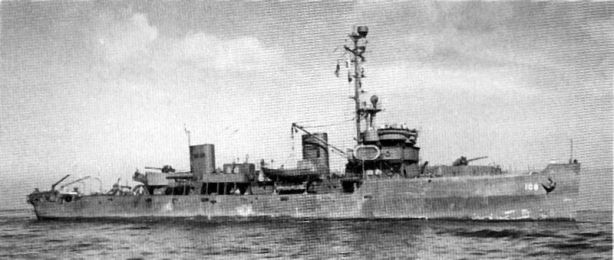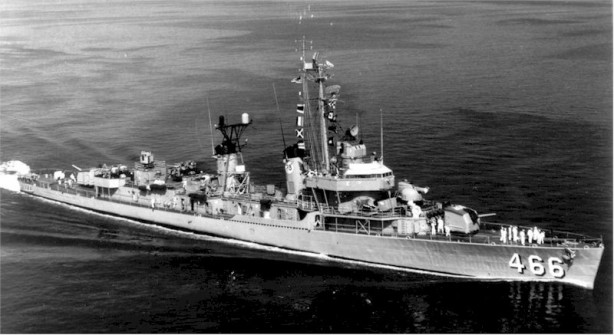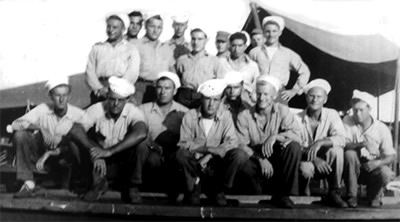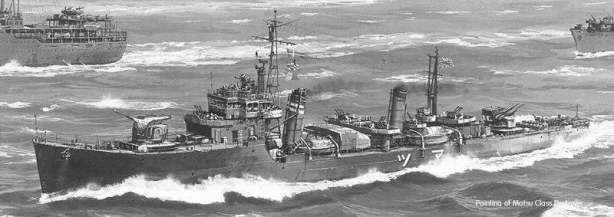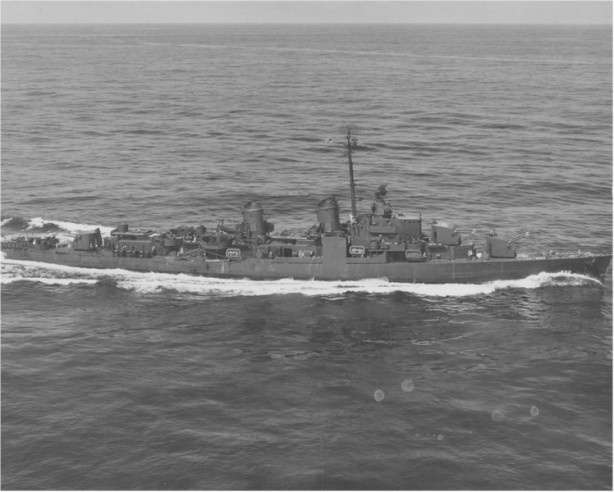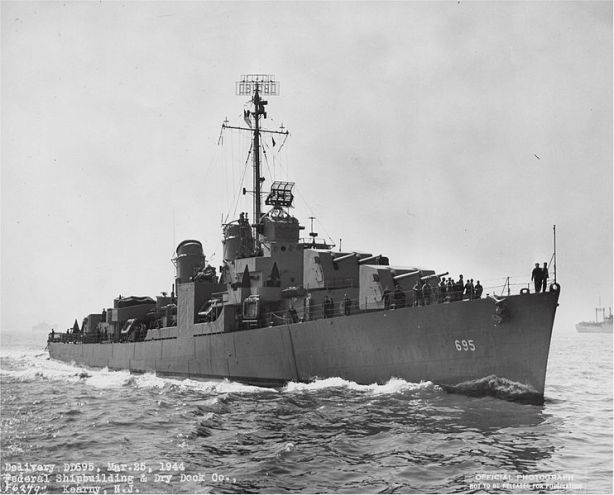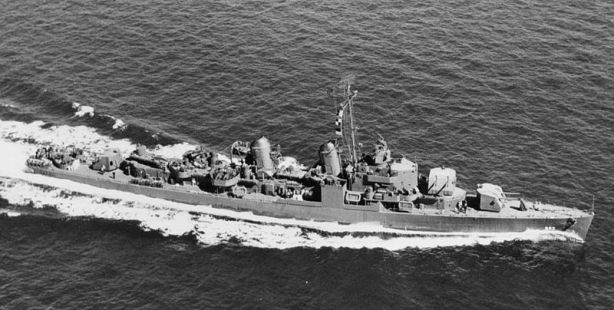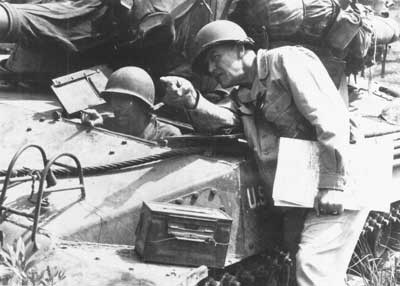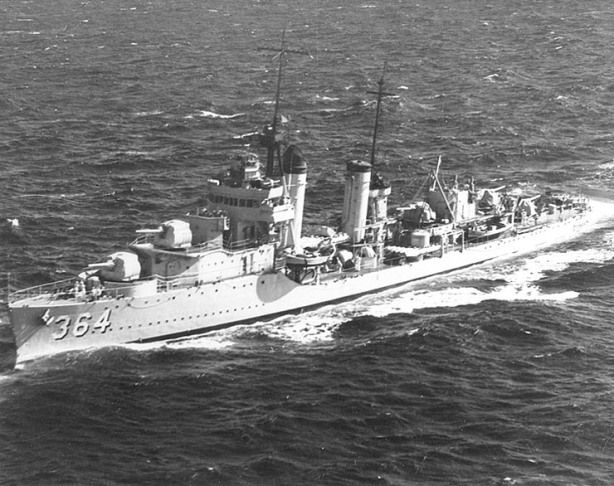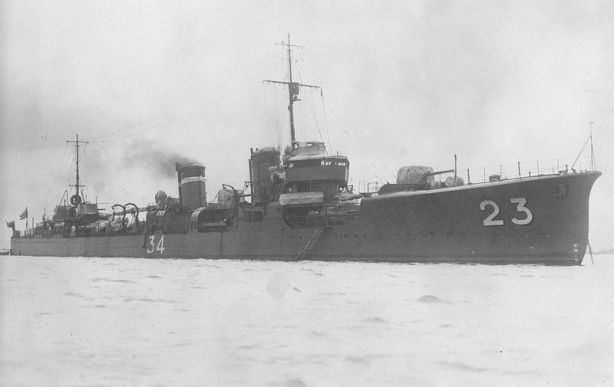The world is still at war and my father, Seaman First Class, John Thomas Ryan is still serving on the USS Hornet (CV-12).
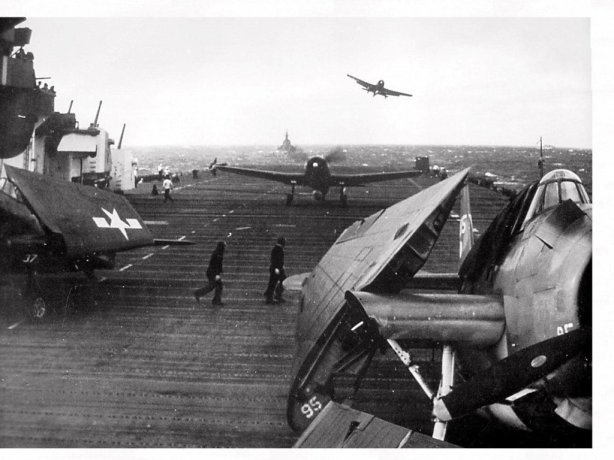
A VF-11 F6F getting a wave off while another Hellcat taxies out of the way, Dec. 1944 on USS Hornet (CV-12).
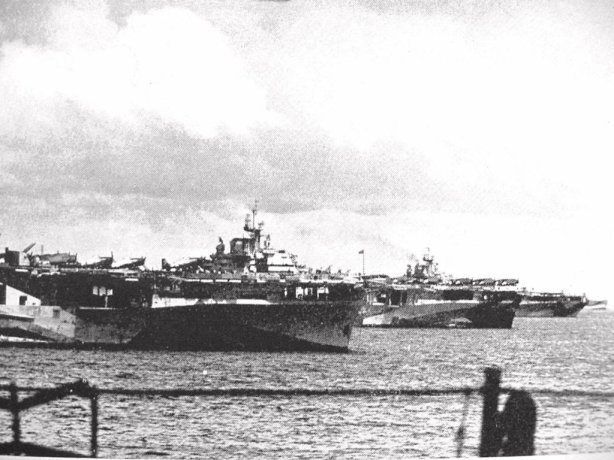
The famous “Murderers Row” at Ulithi lagoon, December 1944, as seen from USS Wasp (CV-18): USS Yorktown (CV-10), USS Hornet (CV-12), and USS Hancock (CV-19).
The ship’s log did not specifically mention this; however according to Wikipedia, in the months following the Battle Leyte Gulf, Hornet attacked enemy shipping and airfields throughout the Philippines. This included participation in a raid that destroyed an entire Japanese convoy in Ormoc Bay.
The Battle of Ormoc Bay was a series of air-sea battles between Imperial Japan and the United States in the Camotes Sea in the Philippines from 11 November-21 December 1944, part of the Battle of Leyte in the Pacific campaign of World War II. The battles resulted from Japanese operations to reinforce and resupply their forces on Leyte and U.S. attempts to interdict them.
After the Battles at Leyte Gulf in late October, the Japanese commander in the Philippines, General Tomoyuki Yamashita, believed that the United States Navy had suffered severe casualties and that the Allied land forces might be vulnerable.
Accordingly, he began to reinforce and resupply the garrisons on Leyte. The Japanese ran nine convoys to the island, landing around 34,000 troops from the 1st, 8th, 26th, 30th, and 102nd divisions. Ormoc City at the head of Ormoc Bay on the west side of Leyte was the main port on the island and the main destination of the convoys.
Decryption of messages sent using the PURPLE cipher alerted the Allies to the concentration of Japanese shipping around Leyte, but they initially interpreted this as an evacuation. However, by the first week of November the picture was clear, and the Allies began to interdict the convoys.
Codename Purple by the United States, was a diplomatic cryptographic machine used by the Japanese Foreign Office just before and during World War II. The machine was an electromechanical stepping-switch device. The information gained from decryption was eventually code-named Magic within the US government. The codename “Purple” referred to binders used by US cryptanalysts for material produced by various systems; it replaced the Red machine used by the Japanese Foreign Office. The Japanese also used Coral and JADE stepping-switch systems.

The Japanese PURPLE machine. At the end of World War II, the Japanese destroyed nearly all of their code machines, and very few parts exist today. This fragment is on display at the National Cryptologic Museum in Washington, D.C. (Photo courtesy of National Cryptologic Museum, NSA)
TA-3 and TA-4 (Japanese)
On 8-9 November, the Japanese dispatched two convoys from Manila to Ormoc Bay. The convoys were spaced one day apart so that the destroyers escorting the first convoy could double back and escort the second. However, the convoys were spotted on November 9 and attacked by land-based aircraft of the Fifth Air Force.
On 10 November the 38th Bomb Group, based on Morotai, sent 32 B-25 Mitchells escorted by 37 P-47 Thunderbolts to attack TA-4 near Ponson Island.Reaching the convoy just before noon, the B-25s attacked at minimum altitude in pairs, sinking the two largest transports, disabling a third, and sinking two of the patrol craft escorts, at a cost of seven bombers, for which the group was awarded the Distinguished Unit Citation.
On 11 November, U.S. 3rd Fleet commander Admiral William F. Halsey ordered an attack by 350 planes of Task Force 38 on the combined convoys.
Four destroyers — Shimakaze, Wakatsuki, Hamanami and Naganami — and three transports were sunk. Rear Admiral Mikio Hayakawa went down with Shimakaze.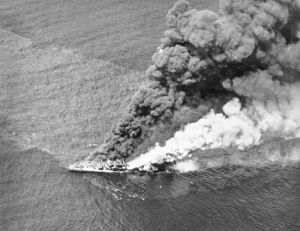
A Japanese destroyer Wakatsuki burns off Leyte, Philippine Islands after being attacked by U.S. carrier planes, 11 November 1944. 350 U.S. Navy aircraft sank the destroyers Hamanami, Naganami, Shimakaze, and Wakatsuki and all the transports of a convoy 80 km north-east of Cebu, Philippines (10.50N 124.35E).
TA-5 (Japanese)
Convoy TA-5 left Manila on 23 November for Port Cataingan and Port Balancan. Of the six transports, five were sunk by air attack.
U.S. destroyer sweeps
Bad weather in late November made air interdiction less effective, and the U.S. Navy began to send destroyers into Ormoc Bay. Canigao Channel was swept for mines by the minesweepers Pursuit and Revenge, and the four destroyers of Destroyer Squadron 22 (DesRon 22) under the command of Captain Robert Smith (Waller, Pringle, Renshaw and Saufley) entered the bay, where they shelled the docks at Ormoc City. An Allied patrol plane radioed a message to the division noting that a surfaced Japanese submarine (I-46) was south of Pacijan Island and heading for Ormoc Bay. The division headed south to intercept; and, at 01:27 on 28 November, Waller‘s radar picked up the target just off the northeast coast of Ponson Island. Waller disabled I-46 with her first shots and, unable to submerge, she could only return fire with her deck guns until she sank at 01:45.
TA-6 (Japanese)
Two transports escorted by three patrol vessels left Manila on 27 November. They were attacked by American PT boats in Ormoc Bay on the night of 28 November and by air attack as the survivors left the area. (Night of November 28/29, 1944, PT 127 and PT 331 torpedoed and sank IJN subchaser No. 52 and Patrol Boat No. 105 at Ormoc Bay.)
All five ships were sunk.
Another U.S. destroyer sweep on the night of 29-30 November in search of a reported convoy resulted only in the destruction of a few barges.
TA-7 (Japanese)
A convoy of three transports departed Manila on 1 December, escorted by destroyers Take and Kuwa under the command of Lieutenant Commander Masamichi Yamashita.
Two groups of transport submarines also took part in the operation.The convoy was docked at Ormoc City when it was engaged at 00:09 on 3 December by three ships of U.S. Destroyer Division 120 (DesDiv 120) under the command of Captain John C. Zahm (Allen M. Sumner, Cooper and Moale).
The U.S. ships sank the transports as they were unloaded but came under heavy attack from Yokosuka P1Y “Frances” bombers, shore batteries, submarines that were known to be in the harbor, and the Japanese destroyers.

The Yokosuka P1Y Ginga was a twin-engine, land-based bomber developed for the Japanese Imperial Navy in World War II. It was the successor to the Mitsubishi G4M and given the Allied reporting name “Frances”.

The Consolidated PBY Catalina was an American flying boat, and later an amphibious aircraft of the 1930s and 1940s produced by Consolidated Aircraft. It was one of the most widely used seaplanes of World War II. Catalinas served with every branch of the United States Armed Forces and in the air forces and navies of many other nations.
At 00:33, the two surviving U.S. destroyers were ordered to leave the bay, and the victorious Japanese successfully resupplied Ormoc Bay once more. This phase of the Battle of Ormoc Bay has gone down in history as the only naval engagement during the war in which the enemy brought to bear every type of weapon: naval gunnery, air attack, submarine attack, shore gunnery and mines.
Ormoc Bay U.S. troop landings
On 7 December, the 77th Infantry Division, commanded by Major General Andrew D. Bruce, made an amphibious landing at Albuera, 3.5 mi (5.6 km) south of Ormoc City.
The 77th Division’s 305th, 306th, and 307th Infantry Regiments came ashore unopposed, but naval shipping was subjected to kamikaze attacks, resulting in the loss of destroyers Ward and Mahan.[1]Other operations
All five transports of convoy TA-8 were sunk on 7 December by air attack, and the escorting destroyers Ume and Sugi were damaged.
Convoy TA-9 entered the bay on 11 December and landed troops, but two escorting destroyers, Yūzuki (by air attacks) and Uzuki (by PT boats), were sunk and the third, Kiri, was damaged.
Aftermath
By fighting this series of engagements in Ormoc Bay, the U.S. Navy was eventually able to prevent the Japanese from further resupplying and reinforcing their troops on Leyte, contributing significantly to the victory in the land battle. The final tally of ships lost in Ormoc Bay is: U.S. — three destroyers, one high speed transport, and two LSMs; Japan — six destroyers, 20 small transports, one submarine, one patrol boat and three escort vessels.
Historian Irwin J. Kappes argued that naval historians have unjustly neglected the importance of these engagements, writing:
“In the end, it was the rather amorphous Battle of Ormoc Bay that finally brought Leyte and the entire Gulf area under firm Allied control. From 11 November 1944 until 21 December, the combined efforts of Third Fleet carrier planes, Marine fighter-bomber groups, a pincer movement by the Army’s 77th Division and the First Division plus a motley assortment of destroyers, amphibious ships and PT boats trounced the now semi-isolated Japanese in a series of skirmishes and night raids. And because of poor weather conditions air support for most of these surface actions was almost non-existent.”
